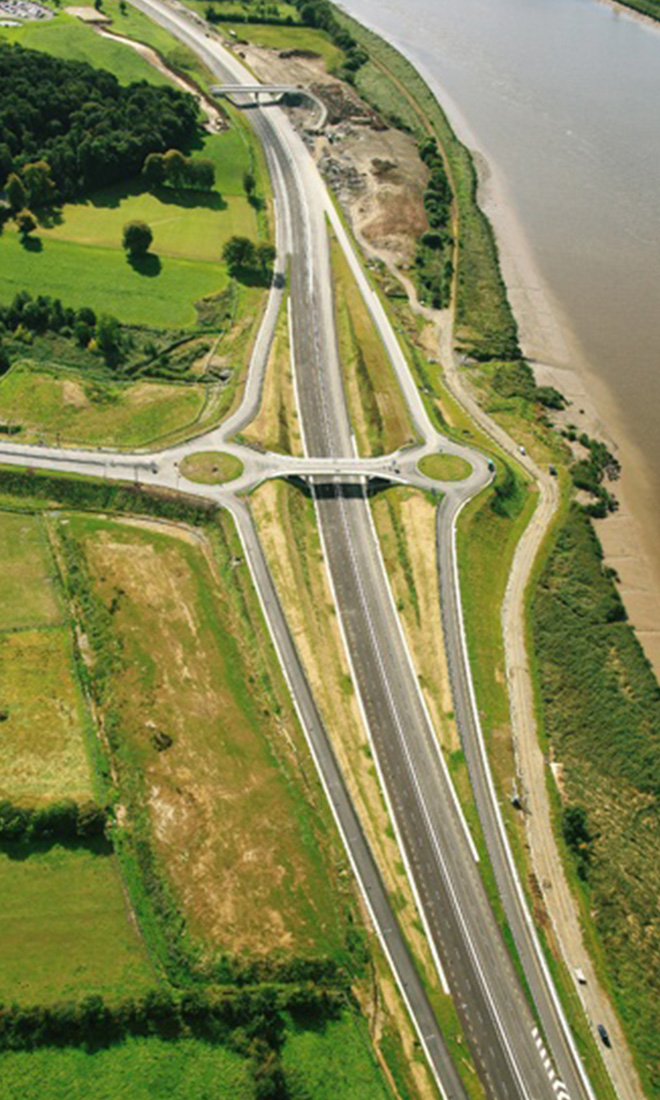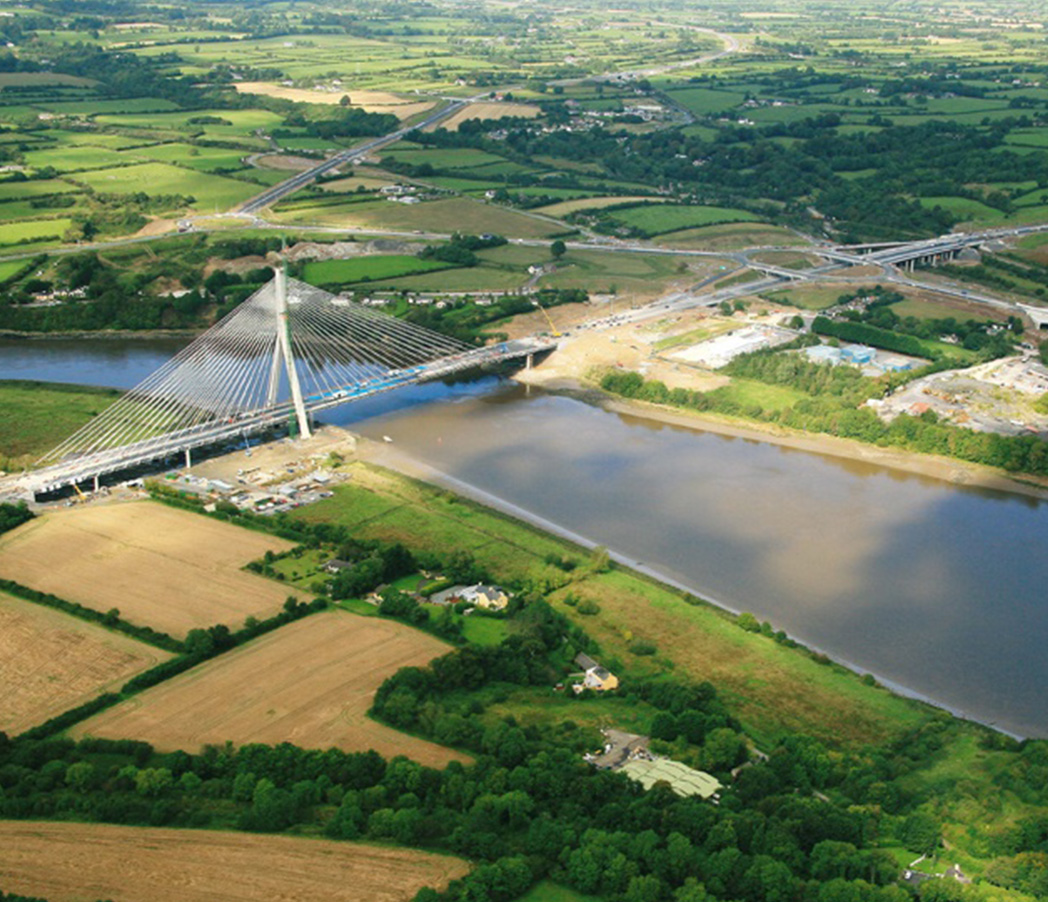N25 Waterford Bypass
The €262 million N25 Waterford Bypass project was a PPP scheme for Ireland’s National Roads Authority which involved the design, build, financing, operating, and maintenance of a new 23-kilometre motorway.
Celtic Roads Group, a consortium comprising of Invesis, BAM, Iridiam and Atlas Investments, were awarded the N25 project in 2006. The development included a new river crossing, a cable stay bridge with an overall length of approximately 475m on the River Suir, and a new connection known as the Western Link, connecting the bypass to industrial areas in the south-west of the city.
Finde mehr heraus

The challenge
SPV General Manager Lorcan Wood explained some of the challenges involved in the scheme.
„One of the key features of the project was the 465-metre long cable stay bridge over the River Suir. The new crossing is to the west of Waterford city and has a single Y-shaped 112-metre pylon on the south side with a main span of 230 metres over the river.
„An additional challenge was risk management – during the procurement process there was a significant archaeological find on the western section which threatened to delay the project.
„The National Roads Authority (NRA) were understandably keen to avoid any delays but could not get the necessary approvals by the programmed date for financial close.
„Celtic Roads Group and the NRA agreed to close on the project on the basis that it would be a variation if the western section did not go ahead. Ultimately, financial close was achieved as planned with a separate financial close for the western section when it achieved the necessary approvals. The project was delivered ten months ahead of schedule.“
Finde mehr herausmillion
Capital value
The solution
Lorcan Wood continued:
“The combination of difficult ground conditions and the fact that a single pylon was required meant that the joint venture team of BAM-Dragados had to develop a radical solution for the design of its foundations. BAM Dragados and Geocisa, the geotechnical division of Dragados, designed a rotary-bored micropiling system which was able to penetrate the fragmented sandstone strata and weathered mudstone.”
BAM’s responsibilities also included the design, construction, installation, testing, and commissioning of the tolling system for the new bridge.
This required the combination of a number of different elements into one cohesive package including payment options such as a pre-paid easypass Electronic Toll Collection (ETC) system, a mini-tag option. as well as a debit/credit card payment option.
Features included advanced warning lights and electronic signs, advanced directional lights and signage, plaza overhead warning lights and signage, directional road marking signage, electronic barrier system, and CCTV systems for traffic counting.


